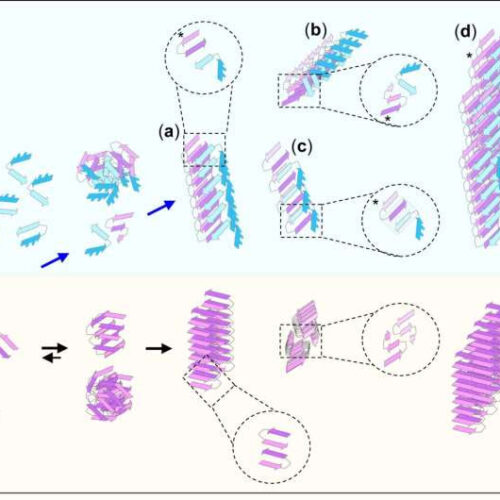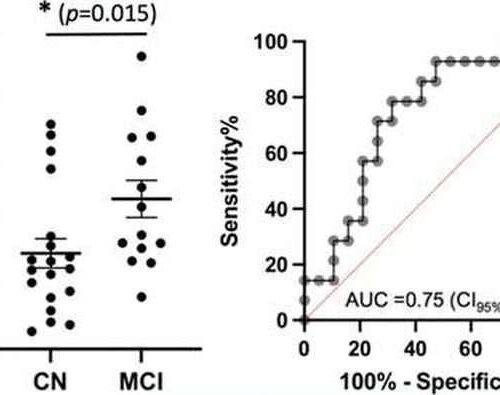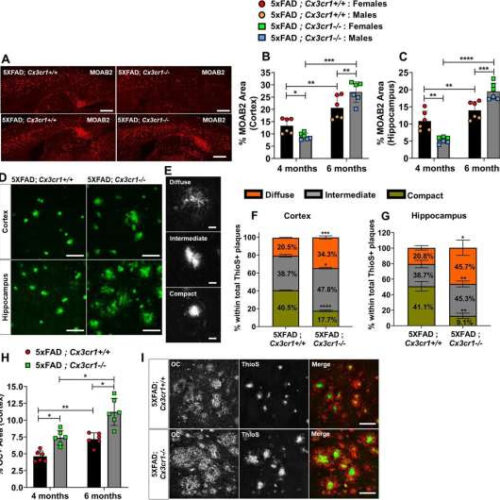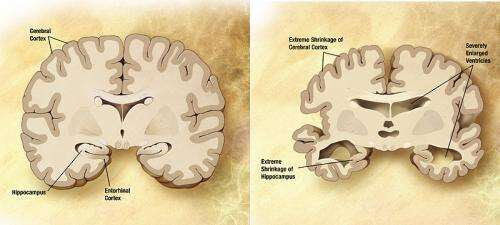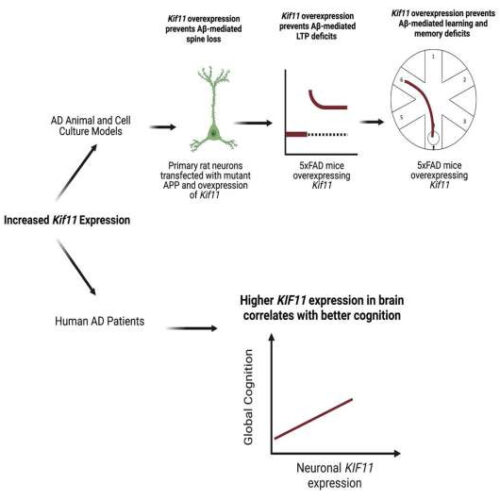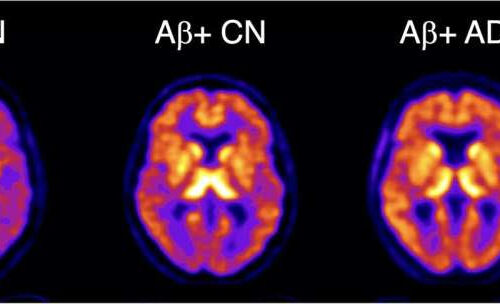by Technical University Munich Proposed mechanism and hypothetical models of IAPP/ACM nanofiber co-assembly versus IAPP amyloid self-assembly. The lower part, IAPP self-assembly into toxic oligomers and amyloid fibrils. The upper part, in the presence of ACMs, IAPP monomers/prefibrillar species are redirected into initially amorphous and non-toxic hetero-assemblies, which convert into amyloid fibril-resembling but ThT-invisible and...
Tag: <span>Alzheimer’s disease</span>
New biomarker could help diagnose Alzheimer’s disease early
by American Chemical Society Graphical abstract. Credit: ACS Chemical Neuroscience (2022). DOI: 10.1021/acschemneuro.2c00342 A definitive diagnosis of Alzheimer’s disease (AD) was once only possible after someone had died, but recent biomarker studies have led to the development of imaging and spinal fluid tests for those still living. However, the tests can only monitor severe disease, differentiating advanced...
Researchers investigate brain’s immune cell response in Alzheimer’s disease
by Indiana University School of Medicine Accelerated plaque deposition in 5xFAD mice deficient in Cx3cr1. (A) Accumulation of MOAB2+ Aβ42 plaques in (top panels) 4 month-old vs. (bottom panels) 6 month-old 5xFAD;Cx3cr1+/+ and 5xFAD; Cx3cr1−/− mice. Scale bars = 500 μm. Quantification of %MOAB2+ areas in the (B) cortex and (C) hippocampus of 4 and 6 month-old 5xFAD;Cx3cr1+/+ (black bars) and 5xFAD;Cx3cr1−/− (gray bars) mice. Data in B,C represent...
Scientists develop new mathematical model of Alzheimer’s disease
by University of York Diagram of the brain of a person with Alzheimer’s Disease. Credit: Wikipedia/public domain. Scientists have used a mathematical model to reveal how toxic proteins cluster together inside the brain during the early stages of Alzheimer’s. The researchers, from the University of York’s School of Physics, Engineering and Technology, say the discovery...
Study identifies blood pressure drug as potential treatment for Black patients with Alzheimer’s disease
by Cleveland Clinic Cleveland Clinic-led study identifies blood pressure drug as potential treatment for Black patients with Alzheimer’s disease. Credit: Cleveland Clinic Considering how patients from different ethnic groups respond to the same drug could be crucial to finding new Alzheimer’s disease treatments—a disorder the Alzheimer’s Association previously deemed a “silent epidemic” among Black adults....
IU researchers investigate brain’s immune cell response in Alzheimer’s disease
INDIANA UNIVERSITY SCHOOL OF MEDICINE INDIANAPOLIS—Indiana University School of Medicine researchers are investigating how the deficiency of a gene in immune cells can shape the progression of Alzheimer’s disease. The study, published in Molecular Degeneration, found that deleting CX3CR1, a microglial gene associated with neurodegenerative diseases, in Alzheimer’s disease animal models resulted in an aggravated disease...
Gene involved in neuronal structure and function may protect against Alzheimer’s disease
by CU Anschutz Medical Campus Credit: iScience (2022). DOI: 10.1016/j.isci.2022.105288 The overexpression of a gene tied to cell division and the structure and function of neurons may prevent and protect against cognitive decline in both mice and humans with Alzheimer’s disease (AD), according to a new study by scientists at the University of Colorado Anschutz Medical Campus....
Novel PET imaging agent detects earliest signs of Alzheimer’s disease
by Society of Nuclear Medicine Graphical abstract. 18F-SMBT-1 PET studies showed that Ab+ Alzheimer’s disease (AD) patients, but most importantly, Ab+ controls (CN) have significantly higher regional 18F-SMBT-1 binding than Ab- CN, with 18F-SMBT-1 retention highly associated with Ab burden. These findings suggest that increased 18F-SMBT-1 binding is detectable at the preclinical stages of Ab accumulation. Credit: Journal of Nuclear...
Model demonstrates how RNA splicing defects contribute to Alzheimer’s disease
by St. Jude Children’s Research Hospital Credit: Pixabay/CC0 Public DomainResearchers have puzzled over the neurodegenerative disorder Alzheimer’s disease for decades, but treatments to stop or reverse the disease’s effects on the brain have remained elusive. Scientists at St. Jude Children’s Research Hospital recently added an important piece to the puzzle by creating a mouse model...
Newly identified mechanism may explain why women are more vulnerable to Alzheimer’s disease
Reviewed by Emily Henderson, B.Sc. Oct 4 2022 Case Western Reserve University researchers have identified a mechanism in brain tissue that may explain why women are more vulnerable to Alzheimer’s disease-;a finding that they say could help lead to new medicines to treat the disease. Specifically, the researchers found that the female brain shows higher...

